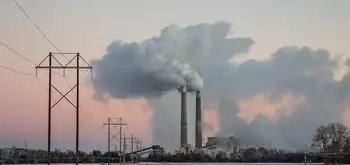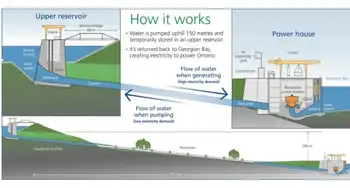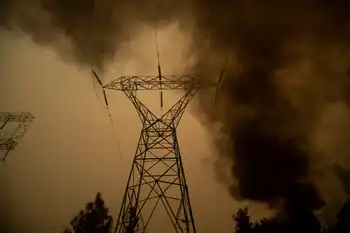Kansas responds to Sunflower lawsuit
By Associated Press
NFPA 70e Training - Arc Flash
Our customized live online or in‑person group training can be delivered to your staff at your location.

- Live Online
- 6 hours Instructor-led
- Group Training Available
Sunflower filed the lawsuit last month in U.S. District Court in Wichita, saying Health and Environment Secretary Rod Bremby's decision to deny the permit violated its right to equal protection and its right to conduct interstate commerce.
It asked U.S. District Judge Eric Melgren to set aside the denial order and issue an injunction to keep the state from considering CO2 emissions in any future proceedings on Sunflower's application. No hearing date has been set.
In its response, the attorney general's office said the federal court lacks jurisdiction in the case because there's an ongoing appeal with Office of Administrative Hearings. There's also a pending case in the Kansas Supreme Court, which has postponed any action until the OAH rules.
Sunflower's lawsuit was the latest in an ongoing battle with the state over the October 2007 decision by Bremby, who cited potential carbon dioxide emissions and global warming for denying the permit. Many scientists link man-made greenhouse gas emissions to global warming.
"Even a cursory analysis of plaintiff's requested relief indicates this case constitutes nothing more than plaintiff's most recent attempt to achieve judicial review of the secretary's denial order prior to the OAH and Kansas Supreme Court completing their ongoing proceedings and the secretary issuing a final order," Six's motion said.
The motion also said both proceedings deal with the Kansas environment and its pollution permitting process "which are important state interests that, as a matter of law, are exclusively assigned to the KDHE."
KDHE spokeswoman Maggie Thompson said the agency doesn't comment on pending litigation.
"We believe the ratepayers of central and western Kansas have not received equal treatment under the law and have been denied the opportunity to benefit from interstate commerce," Clare Gustin, Sunflower vice president, said.
Gustin said Sunflower is committed to developing the power plants at Holcomb in Finney County to bring "low cost, reliable power to central and western Kansas."
In September 2007, the attorney general's office told Bremby he had the authority to deny the permit to protect the health of people or environment, even though there's no state or federal regulations setting limits for CO2 emissions.
Environmentalists opposed the $3.6 billion plants, but there was bipartisan support because many legislators, especially those from western Kansas, viewed it as economic development.
The Legislature tried three times this year to overturn Bremby's decision and allow the Hays-based Sunflower to build the plants. Each bill was vetoed by Gov. Kathleen Sebelius and legislators didn't have the votes to override her veto.
Sebelius and Lt. Gov. Mark Parkinson, along with Bremby, were named in Sunflower's lawsuit. The state's motion asks the court to remove Sebelius and Parkinson as defendants because they don't have the authority to act on Sunflower's application.
Sunflower wants to sell about 86 percent of the new power to two out-of-state electric cooperatives that are helping finance the project. They are Tri-State Generation and Transmission Association Inc. of Westminster, Colo., and Golden Spread Electric Cooperative, in Amarillo, Texas.
The new generating capacity, totaling 1,400 megawatts, would be enough to meet the peak demands of 700,000 households, according to one state estimate. Sunflower and a sister utility, Midwest Energy Inc., serve about 400,000 customers in 55 Kansas counties.











